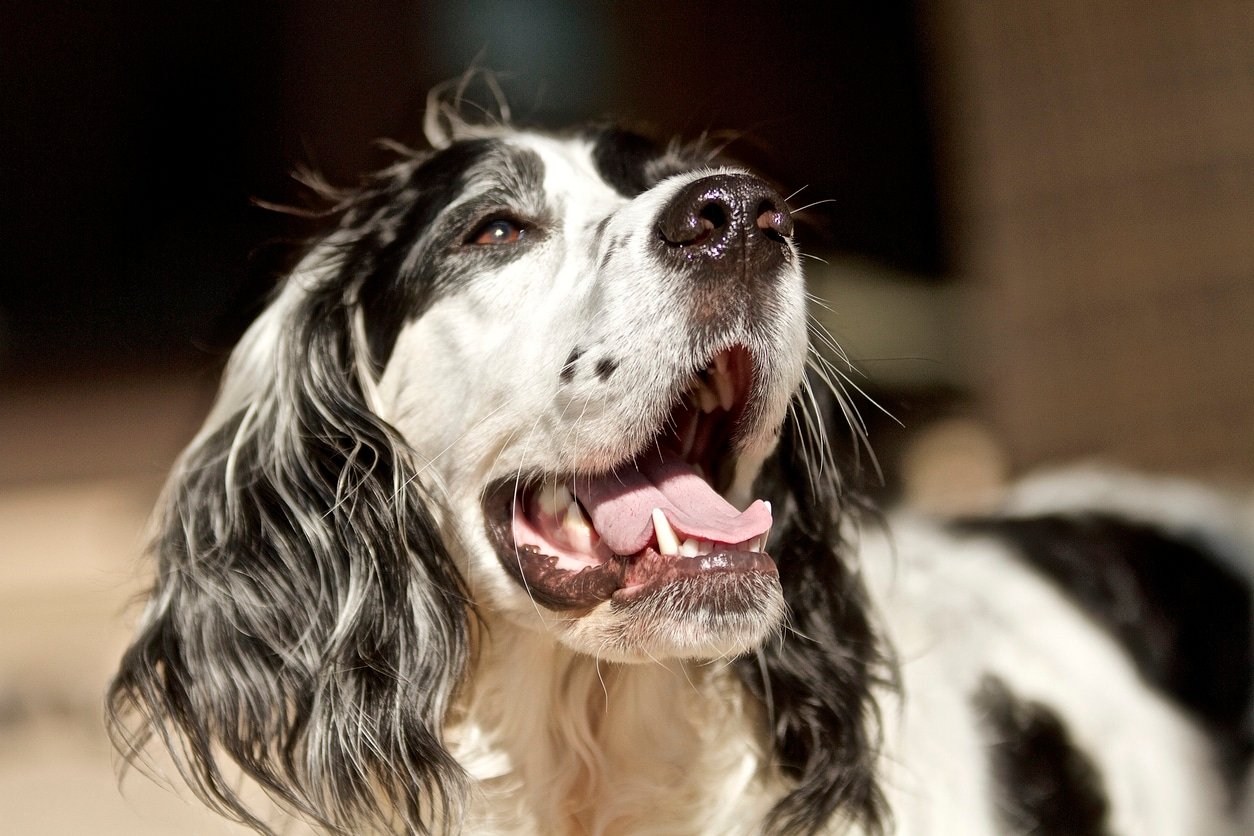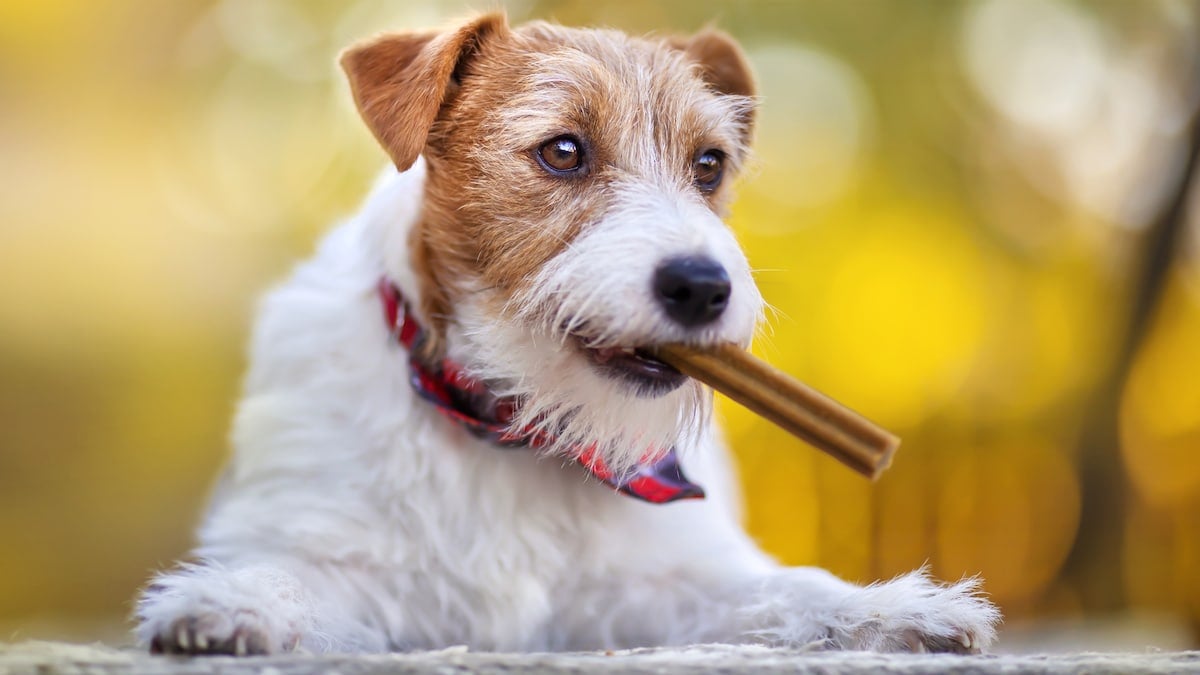Your dog is an invaluable companion and a daily source of joy… but nobody enjoys cuddles when there’s bad breath involved. Dog breath has sullied many a memorable moment—not just between dog lovers and their pets, but when the adorable animal first meets a friend or family member. When an introduction to your pooch is punctuated by the noxious odour of bad dog breath, it makes a lasting, stomach-turning impression.
When everything else about your doggy is delightful, how do you combat this olfactory assault? Here are our top 10 tips and tricks for dealing with smelly dog breath.

Image credit: LeslieLauren | iStock
Dog Breath: The Good, The Bad, And The Unhealthy
1. Have another drink
The first place to start is the water bowl. Bacteria that causes bad breath builds up in the absence of moisture, so fresh water at least three times a day will help, and hydration is important for general health.
2. Minimise the meat
You may share your canine’s carnivorous appetites, but the same thing mum told you repeatedly as a child applies to the pooch: you need to eat your vegetables. Carrots in particular help remove plaque. Check what’s in that dog food you’re using and make sure it’s a combination that includes vegetables and rice.
3. Give the dog a bone
Tartar builds up on teeth and gums, so bones and other healthy chew toys will help get rid of it and the accompanying odours that accumulate. Make sure it’s not a bone that will splinter or hurt, and replace them when they’re small enough to swallow.
4. Break out the brush
You’re not the only one who needs to brush their teeth; domesticated dogs need a good brushing, but paws can’t perform the task. That’s where you come in. Getting the hang of this and establishing a routine might be a chore, but it should be done daily if possible. If you have a stubborn dog that won’t tolerate it, use a water additive to fight plaque and bacteria growth. Learn more in our post about dog dental health.

Irina Kashaeva via iStock
5. An apple a day…
Curiously enough, what keeps the dentist away from humans might help Fido. See if sharing a golden delicious or your favourite apple helps your dog’s breath problem, but avoid giving them the core.
6. Try home remedies
You might not want to deal with a lot of manufactured—or expensive—pet products, so start with kitchen solutions. Small quantities of fresh herbs like coriander, dill or mint can be slipped into a dog’s food or served as a tea to freshen breath.
7. Purchase products
You might need to invest in preferred pet products to keep the halitosis (bad breath) at bay. Dental sticks and chews are available at most pet stores; Greenies is a popular brand. Since 80% of bad breath relates to the tongue, not teeth, a tongue-scrubbing solution might do the trick.

Wavetop via iStock
8. Move the litter box
Part of the reason your dog’s breath might smell like crap is, frankly, because they’re eating it. Many canines are natural scavengers and consuming faeces is in their nature. If you have a cat in the house, that litter box is like a doggy dessert tray. Keep it in a place only your kitty can access. When you walk the dog, steer them clear of any poo-poo platters.
9. Start young
Whether it’s a tooth-brushing regimen, enforcing the right diet, or training your pooch to pass up the poop, the earlier the better. The older a dog gets, the more resistant they’ll be. Educate yourself and introduce healthy routines at the puppy stage.
10. Don’t just treat the symptom
The simple fact is that if your dog has bad breath, you want it to go away. That’s not bad, but it might be selfish. Simply covering up a breath issue might blind you to something more serious. Problems might range from tooth infection to tumour, even kidney or liver disease, so don’t pave over the odour issue at the expense of regular veterinary examinations. In most cases a healthy dog won’t have halitosis, so ask your vet to help identify the issue, small or large.
The information provided in this article is not a substitute for professional veterinary help.



